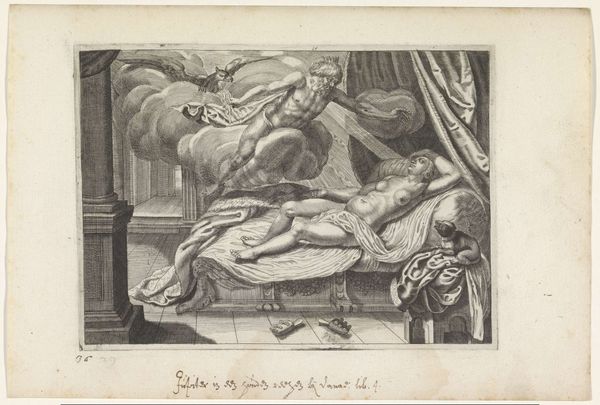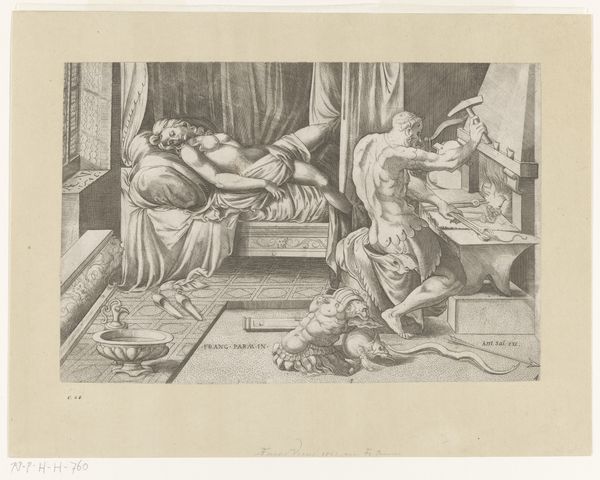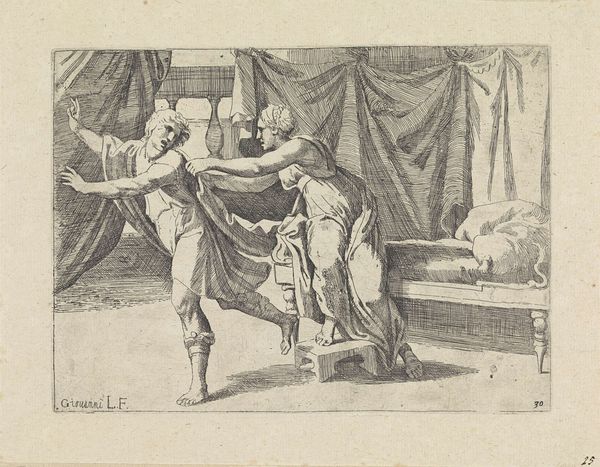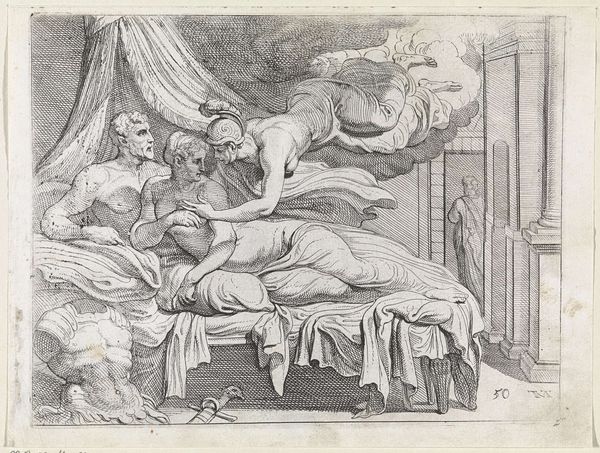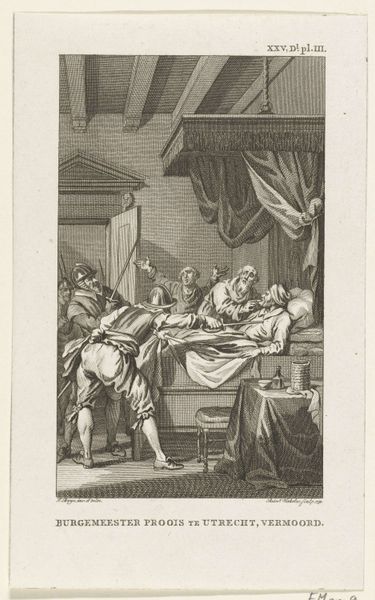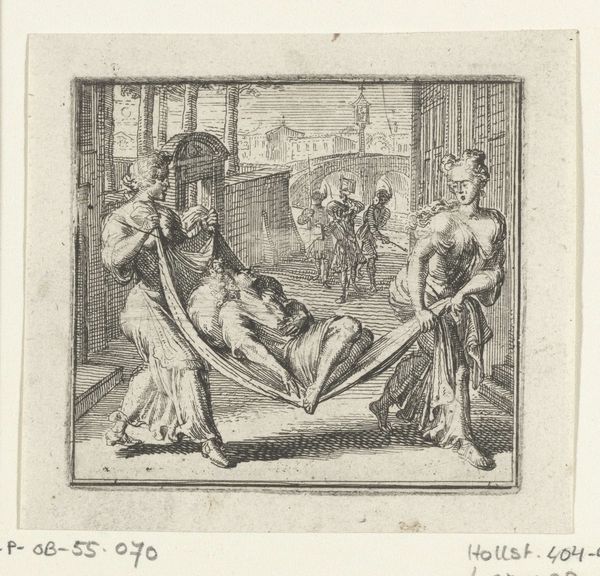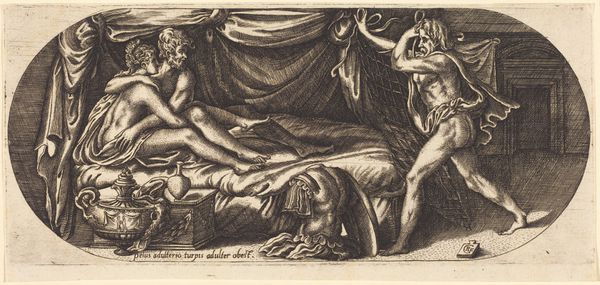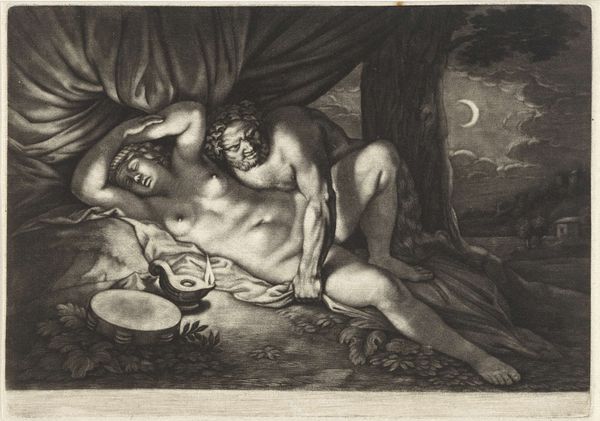
engraving
#
baroque
#
figuration
#
line
#
history-painting
#
nude
#
engraving
Dimensions: height 162 mm, width 223 mm
Copyright: Rijks Museum: Open Domain
Editor: This is "Jupiter en Semele" by Crispijn van de Passe the Younger, created sometime between 1636 and 1670. It’s an engraving, so all lines, really precise. I’m struck by the contrast between the active, almost violent energy of Jupiter and the passive repose of Semele in her bed. What do you see in this piece, beyond the obvious mythological narrative? Curator: What jumps out is the power dynamic so explicitly displayed here, and its rootedness within established power structures. Jupiter, god of gods, literally descending upon Semele, a mortal. We have to consider this within the context of 17th-century societal norms and representations of gendered power. How might contemporary feminist theory help us understand this image? Editor: Well, immediately, I see a lack of agency on Semele's part. She's asleep, unaware, while Jupiter arrives with what looks like lightning bolts – maybe representing divine power, or something far more violent. It feels less like a loving encounter and more like an imposition. Curator: Exactly. And how does the artistic style – the sharp, precise lines of the engraving – contribute to this feeling? Does it amplify or diminish the sense of violation? Consider, too, the expectations around representing female nudity in art at this time, and who was consuming these images. Editor: It does amplify it, I think. The lack of softness makes it clinical, detached. And knowing who would have been looking at this, mostly wealthy men, definitely adds another layer of discomfort. The scene then plays into existing power structures. Curator: Precisely. The artist is not just illustrating a myth, he's participating in a cultural discourse about power, gender, and spectatorship. These historical prints functioned as visual culture in early modern households. How did its function influence it's message, and the myth of Semele in turn? Editor: I hadn’t really considered the layers of power at play. It’s not just a historical scene but a product and reinforcer of its time. The context really does change everything. Curator: Absolutely. By placing the artwork within the frame of socio-political discourse, it encourages a wider understanding of not just this engraving, but representation in visual art through time.
Comments
No comments
Be the first to comment and join the conversation on the ultimate creative platform.
